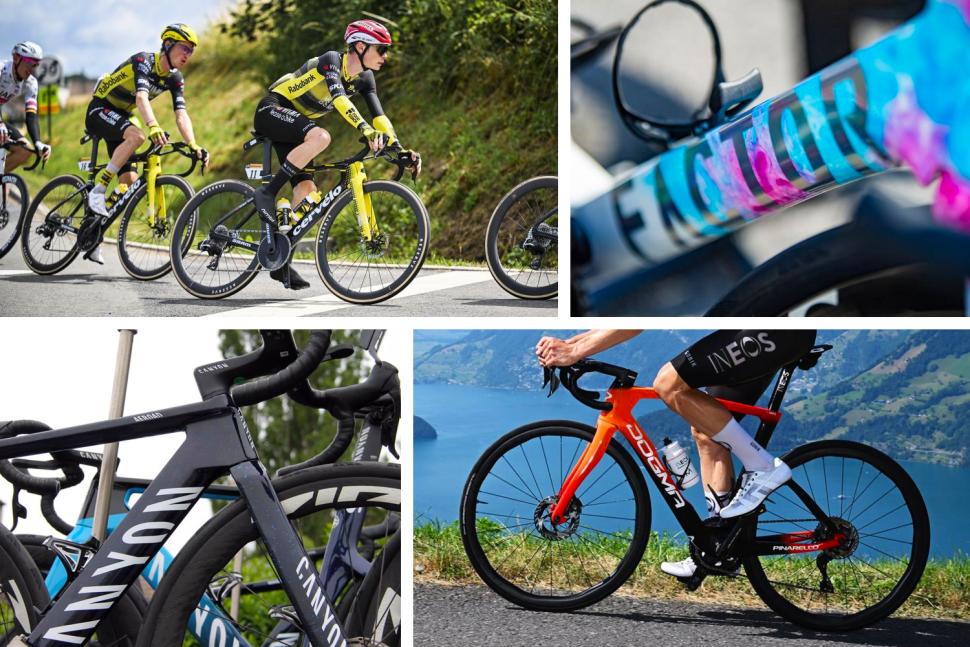A few years ago, many pro cycling teams started moving away from offering their riders a choice between a lightweight road bike and an aero option, and shifted towards a ‘one bike to rule them all’ approach, but are we now seeing a shift in the opposite direction with specialist aero bikes starting to rule the roost?
During the Tour de France last week, we saw Tadej Pogacar and Jonas Vingegaard leading the race in the Pyrenees, including summit finishes, on aero road bikes – the Colnago Y1Rs and the Cervelo S5. Each of them had the choice of a lighter all-rounder bike, which they could have swapped to for the climbs, but they stuck with their aero bikes.
Have dedicated aero bikes again come to the fore?
Colnago: Pogacar puts his faith in aero
Conago has launched two bikes over recent months: the aero-optimised Y1Rs and the lighter V5Rs, which is designed as more of an all-rounder, although certainly with aero features.
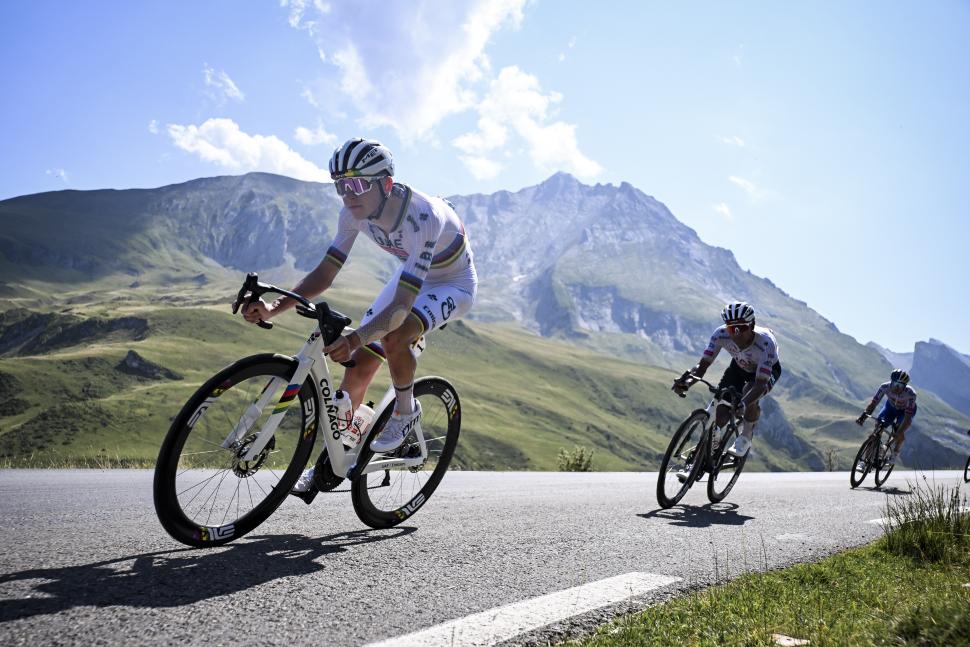 2025 Tour de France Tadej Pogacar Credit- A.S.O.-Billy Ceusters (credit: A.S.O./Billy Ceusters)
2025 Tour de France Tadej Pogacar Credit- A.S.O.-Billy Ceusters (credit: A.S.O./Billy Ceusters)
It’s interesting that Tadej Pogacar has favoured the aero Y1Rs in the Tour de France, even in the mountains. He rode the aero V5Rs throughout Stage 12 of this year’s Tour de France, for instance, when he put a significant amount of time into his rivals. The stage rolled along before hitting three categorised climbs in the last 60km, culminating in a Hautacam summit finish, yet Pogacar stuck with the slightly heavier bike.
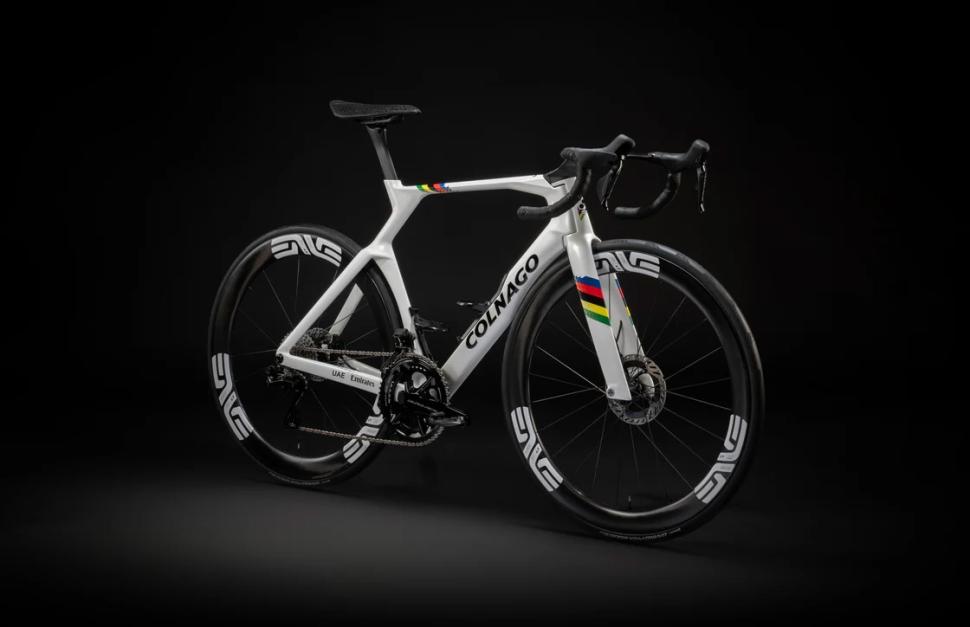 Colnago Y1Rs WC livery (credit: Colnago)
Colnago Y1Rs WC livery (credit: Colnago)
Pogacar also used a stripped-back version of the Y1Rs for the mountain time trial, then a similar bike (see below) with a few usual road-stage features for Stage 16, culminating in a summit finish on Mont Ventoux. Pogacar rode a painted Y1Rs earlier in the Tour de France, but this new version is all about saving weight so it has a thin clearcoat finish.
Colnago says that a Y1Rs in a typical race build weighs around 7.2-7.5kg. The build that Pogacar used for the mountain time trial was a claimed 6.9kg.
Even with things like bottle cages, handlebar tape, 28mm tyres and a 160mm front brake rotor added for the Stage 16 road stage (Pogacar used a 140mm rotor in the time trial), this bike won’t be too far over the UCI’s 6.8kg minimum weight limit for racing.
Pogacar has the option of using the new Colnago V5Rs – a little lighter than and a little less aerodynamically efficient – but he has kept faith with the Y1Rs.
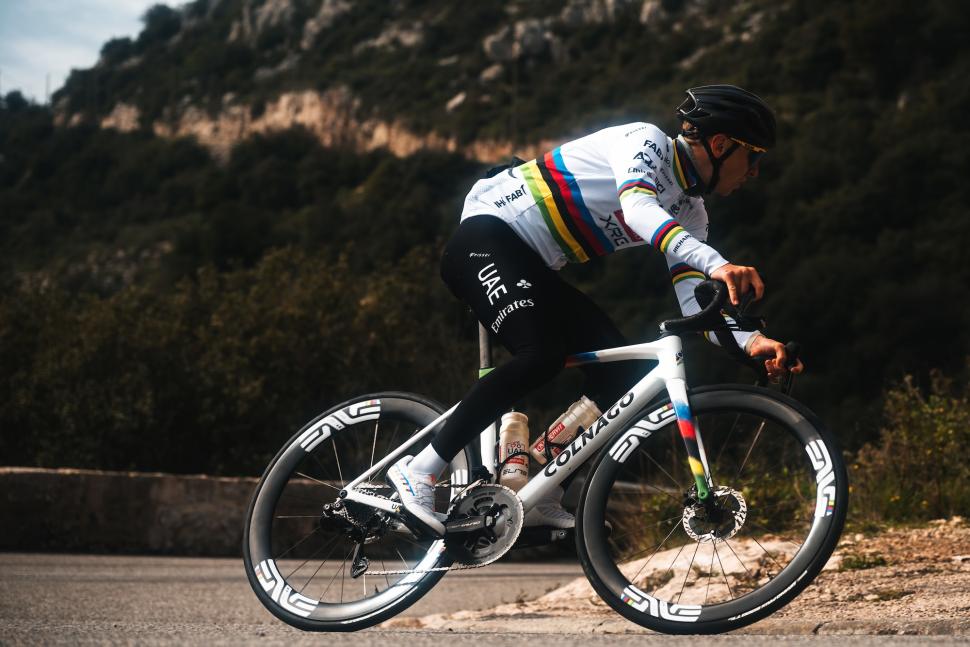 2025 Colnago V5Rs Pogacar – 1 (credit: Colnago)
2025 Colnago V5Rs Pogacar – 1 (credit: Colnago)
“If a rider is expected to work at the front for most of the stage and isn’t meant to stay with the leader on the final climb, then the obvious choice is the aero bike,” says Davide Fumagalli, Colnago’s head of product.
“Even if the stage finishes atop Mont Ventoux, the extra [weight] of the Y1Rs doesn’t make a meaningful difference if the rider’s primary goal is just to finish within the time cut.”
Obviously, Pogacar is looking for a lot more than that.
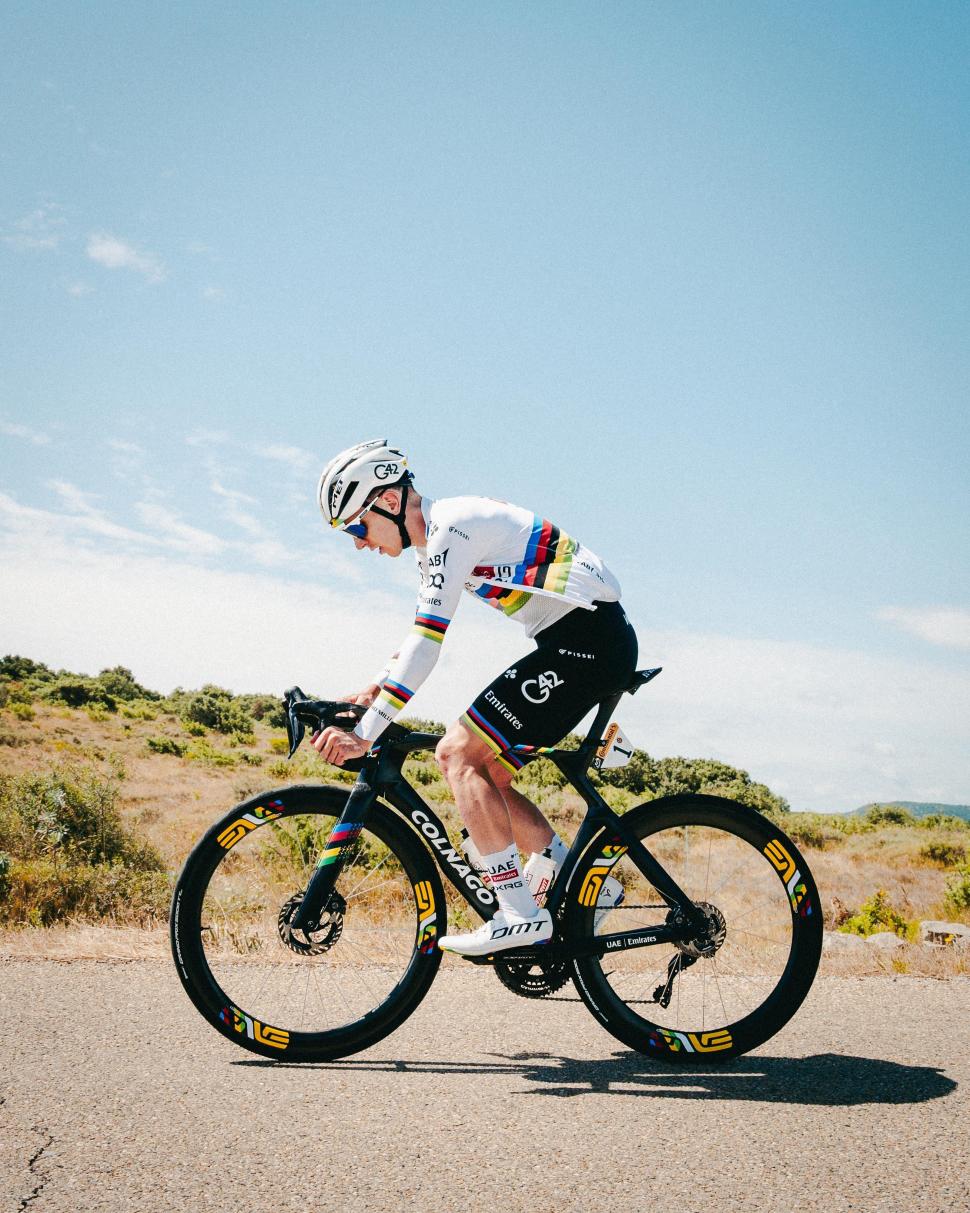 2025 Tour de France Colnago Y1Rs Black Version Tadej Pogacar riding (credit: Colnago)
2025 Tour de France Colnago Y1Rs Black Version Tadej Pogacar riding (credit: Colnago)
“In stages where a key moment calls for better aero efficiency, like a flat section after an attack or a climb with an average gradient of less than 8%, the team will favour the Y1Rs, even if the rest of the stage suits the V5Rs better, says Davide Fumagalli.
“The team has done its calculations, and the tipping point is around that 8% gradient. Not many climbs are significantly steeper than that on average.
“Take the uphill time trial: although it was a climbing stage, the average speed was relatively high. In that context, the aero bike, especially as it was set up relatively light, proved worth the extra weight.
“Another consideration is how much energy can be saved with the aero bike versus the V5Rs in the lead-up to the climbs. Over longer stages, this can make a meaningful difference in overall freshness at the decisive moments.”
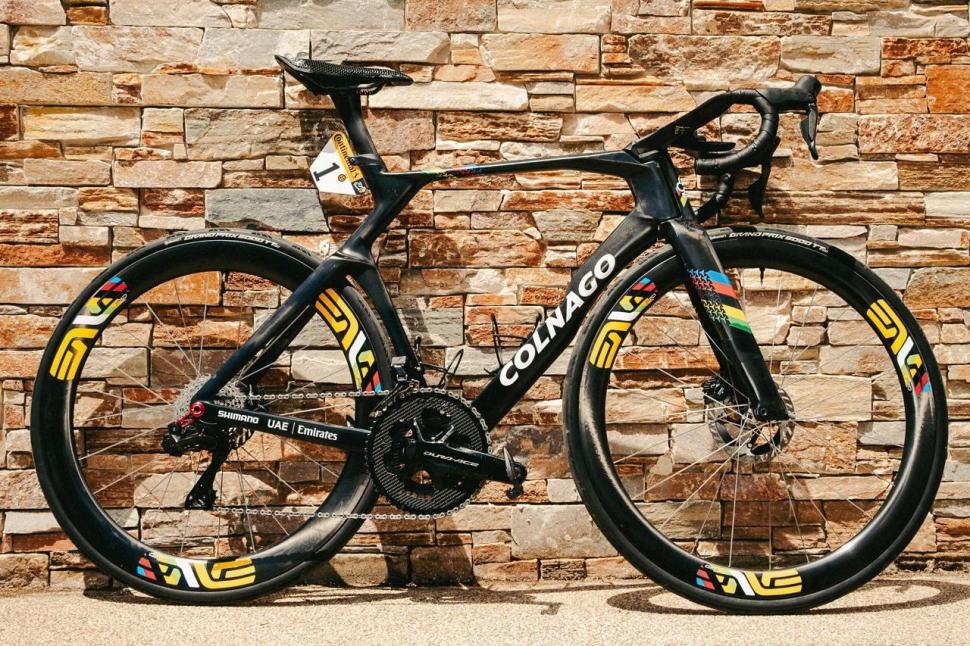 2025 Tour de France Colnago Y1Rs Black Version Tadej Pogacar bike alone (credit: Colnago)
2025 Tour de France Colnago Y1Rs Black Version Tadej Pogacar bike alone (credit: Colnago)
In other words, while the V5Rs would provide a very slight weight advantage, the superior aero performance of the Y1Rs is usually more important.
It’ll be interesting to watch Pogacar’s bike strategy over the rest of the race. There are more summit finishes to come.
Cervelo: Vingegaard goes aero too
Visma-Lease a Bike ride bikes from Cervelo, a brand that has been equally busy lately.
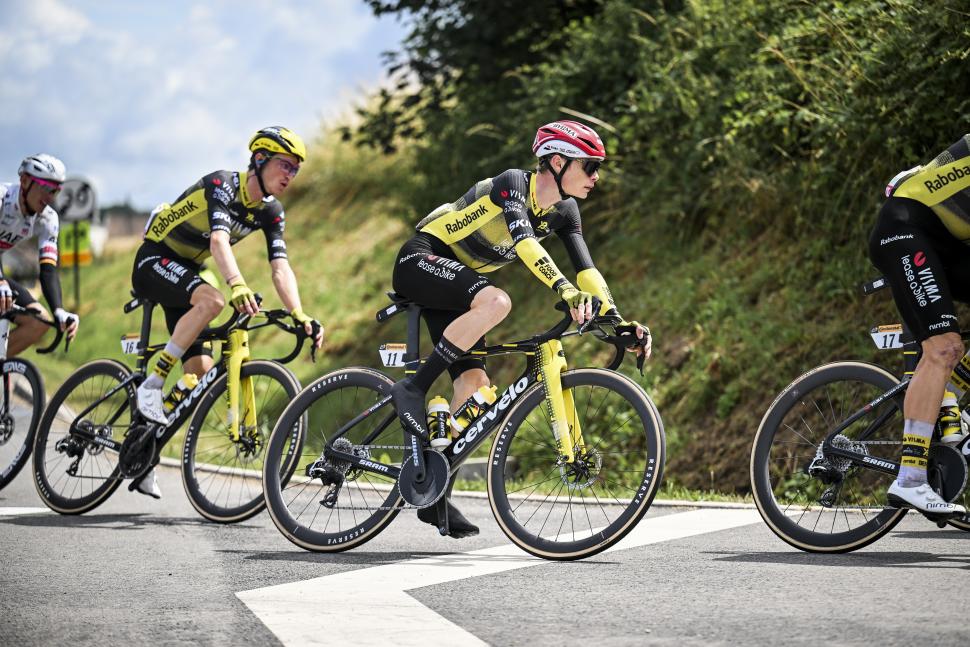 2025 Tour de France Jonas Vingegaard Credit A.S.O.-Billy Ceusters – 1 (credit: ASO/Billy Ceusters)
2025 Tour de France Jonas Vingegaard Credit A.S.O.-Billy Ceusters – 1 (credit: ASO/Billy Ceusters)
Cervelo provides the team with the new version of its S5 aero road bike, released during this year’s Tour de France although raced for months previously, and the lightweight R5. The updated R5 has yet to be officially unveiled.
Like Tadej Pogacar with his Colnago Y1Rs, two-time Tour de France winner Jonas Vingegaard stuck with the aero S5 throughout Stage 12, including on the Hautacam climb.
> Cervelo says new S5 is “at least 5 watts faster than the bikes of our competitors”
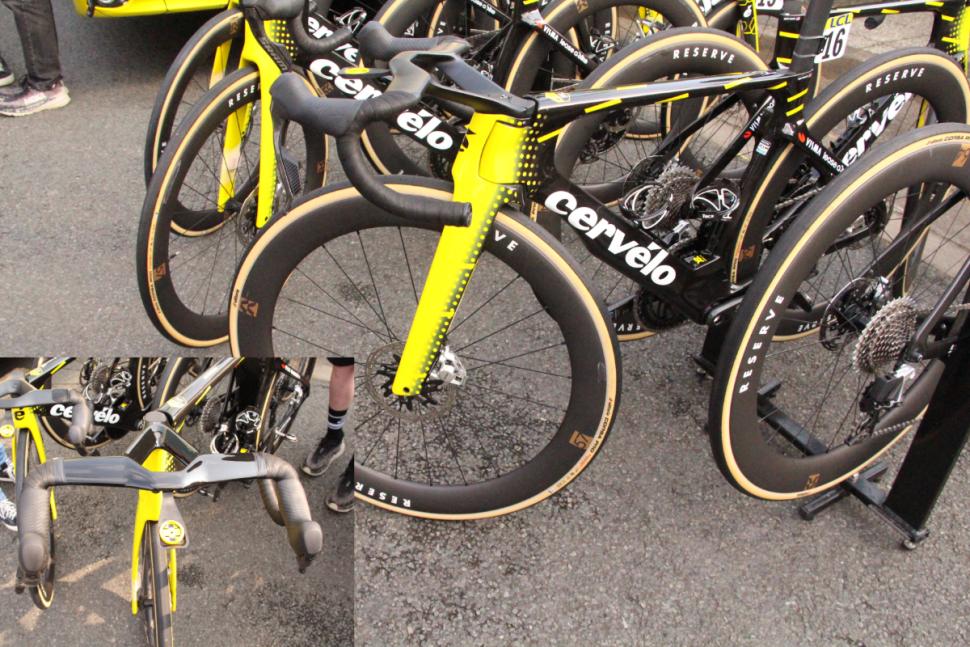 2025 Dauphine new Cervélo S5 (credit: road.cc)
2025 Dauphine new Cervélo S5 (credit: road.cc)
With its latest update, Cervelo says that it has improved the S5’s aero performance, reduced the overall weight by 124g, and maintained stiffness. The frame is now a claimed 1,006g while the fork is 465g.
Cervelo has yet to publish figures for its new R5, but the existing model has claimed frame and fork weights of 703g and 329g, respectively.
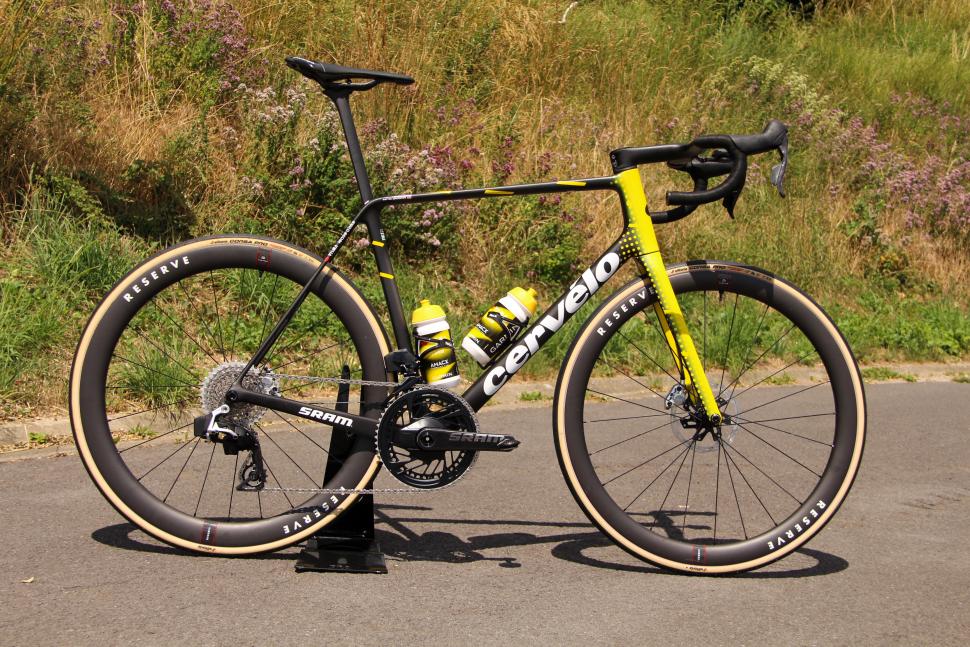 Cervelo has kept Jorgensen’s size large bike down to 6.8kg in ready to race form. For Vingegaard’s much smaller bike, the mechanics are adding several hundred grams to the bottom bracket. (credit: Liam Cahill)
Cervelo has kept Jorgensen’s size large bike down to 6.8kg in ready to race form. For Vingegaard’s much smaller bike, the mechanics are adding several hundred grams to the bottom bracket. (credit: Liam Cahill)
Although we’ve seen Matteo Jorgenson racing on the unreleased R5 in the 2025 Tour de France, we’ve yet to see Jonas Vingegaard on it. He’s so far stuck with the S5 throughout, even in the mountains.
Will that change when we get to the final two mountain stages, with 5,450m and 4,550m of climbing? We’ll just have to wait and see.
Canyon Aeroad CFR: aero or all-rounder?
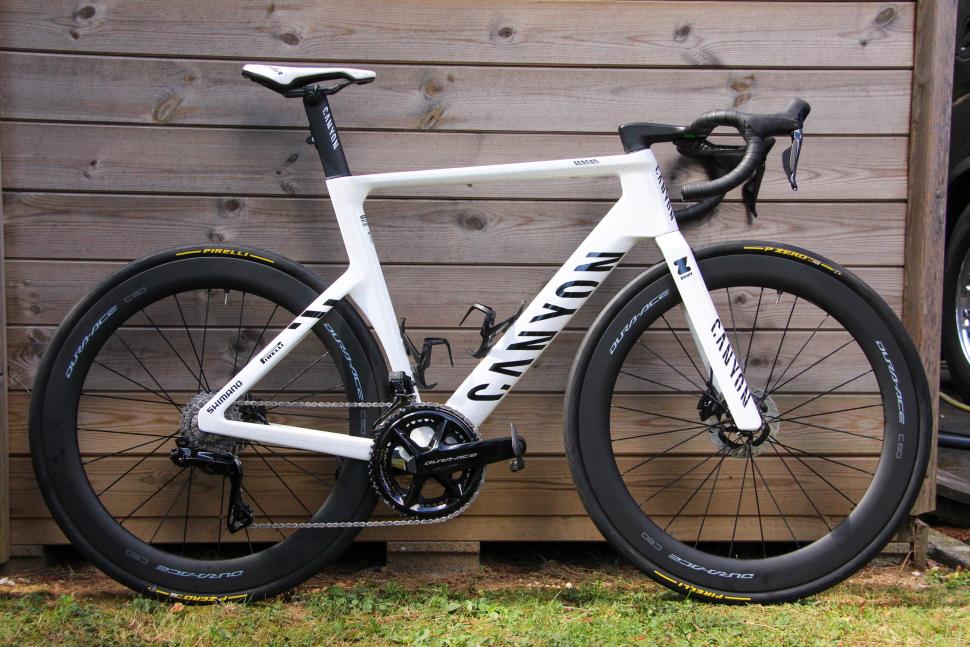 Van der Poel and Philipsen Canyon Aeroad CFR-12 (credit: Liam Cahill)
Van der Poel and Philipsen Canyon Aeroad CFR-12 (credit: Liam Cahill)
Similarly, Canyon provides Alpecin-Deceuninck and Movistar riders with the Aeroad CFR aero road bike and the Ultimate all-rounder road bike, but it’s the Aeroad that is the pros’ unusual weapon of choice. Even Movistar’s climber Enric Mas opts for the Aeroad in the mountains.
Canyon released the updated Aeroad CFR last year, calling it “the fastest bike in the WorldTour peloton”.
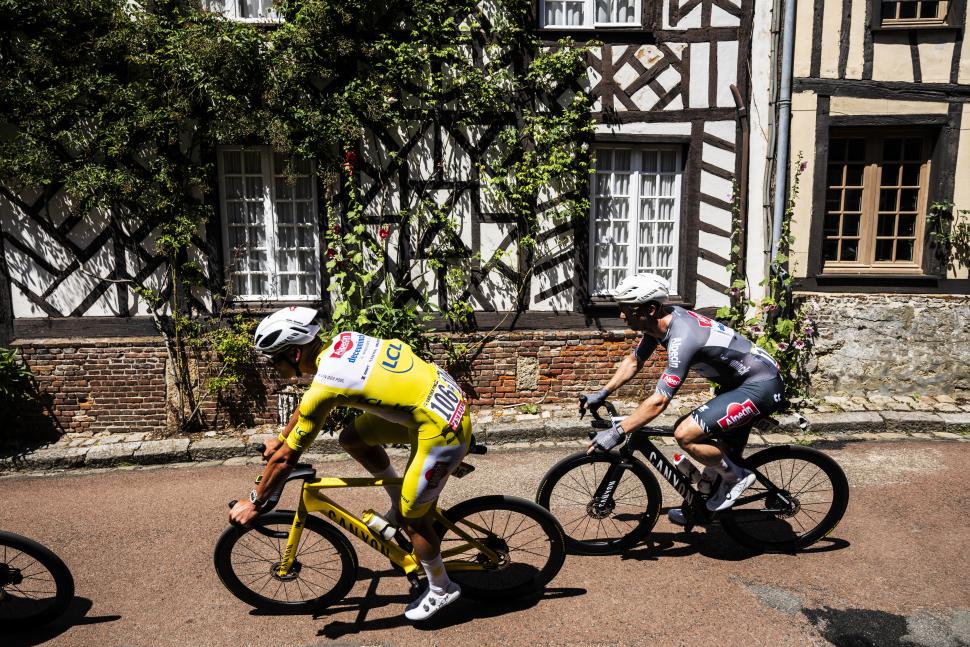 2025 Tour de France Mathieu VAN DER POEL (ALPECIN-DECEUNINCK), Kaden GROVES (ALPECIN-DECEUNINCK) a.s.o.-charly lopez (credit: ASO/Charly Lopez)
2025 Tour de France Mathieu VAN DER POEL (ALPECIN-DECEUNINCK), Kaden GROVES (ALPECIN-DECEUNINCK) a.s.o.-charly lopez (credit: ASO/Charly Lopez)
With subtle updates to the components and frame, the 4th-gen Aeroad has a deeper head tube, integrated bottom bracket area on non-drive side chainstay and a broader fork design that tapers to a narrower head tube.
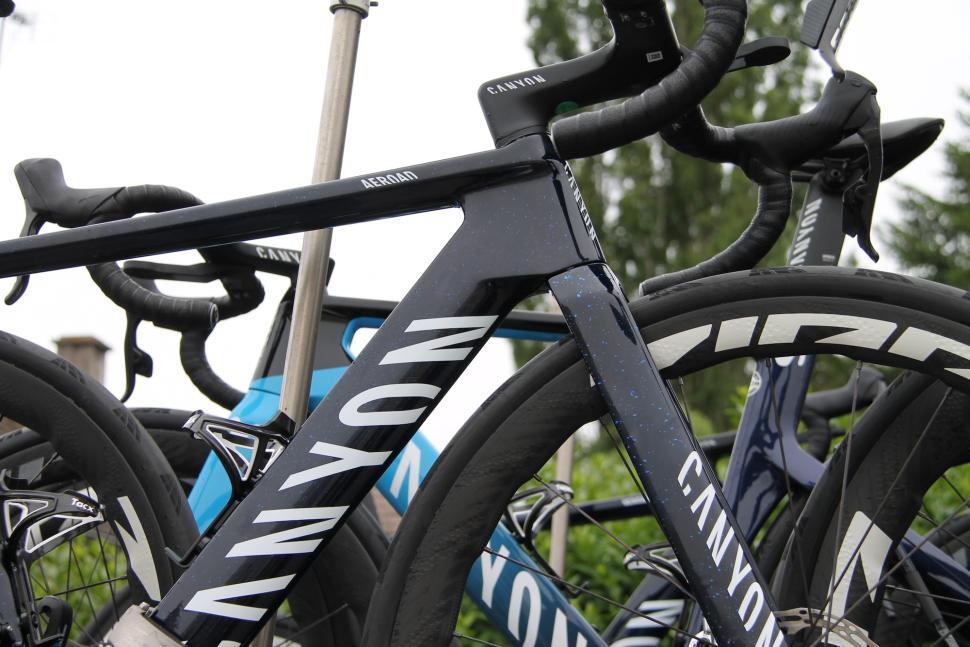 2024 Canyon Aeroad Dauphine – 5.jpeg (credit: road.cc)
2024 Canyon Aeroad Dauphine – 5.jpeg (credit: road.cc)
The Aeroad CFR Di2 has a claimed weight of just 7.07kg, yet the frameset is said to tip the scales at 960g, 45g more than the previous Aeroad.
That’s not exactly light by do-it-all race bike standards, with the Specialized SL8 frame weighing 685g, but Canyon has managed to keep the overall bike weight competitive with a new lighter cockpit and shallower wheels.
Van Rysel has a two-bike strategy
Over at the Decathlon AG2R La Mondiale team riders have the choice of the Van Rysel RCR-R, which is said to offer “the perfect balance of aerodynamics, weight and rigidity”, and the RCR-F, which has a greater focus on aerodynamics at the cost of a little weight.
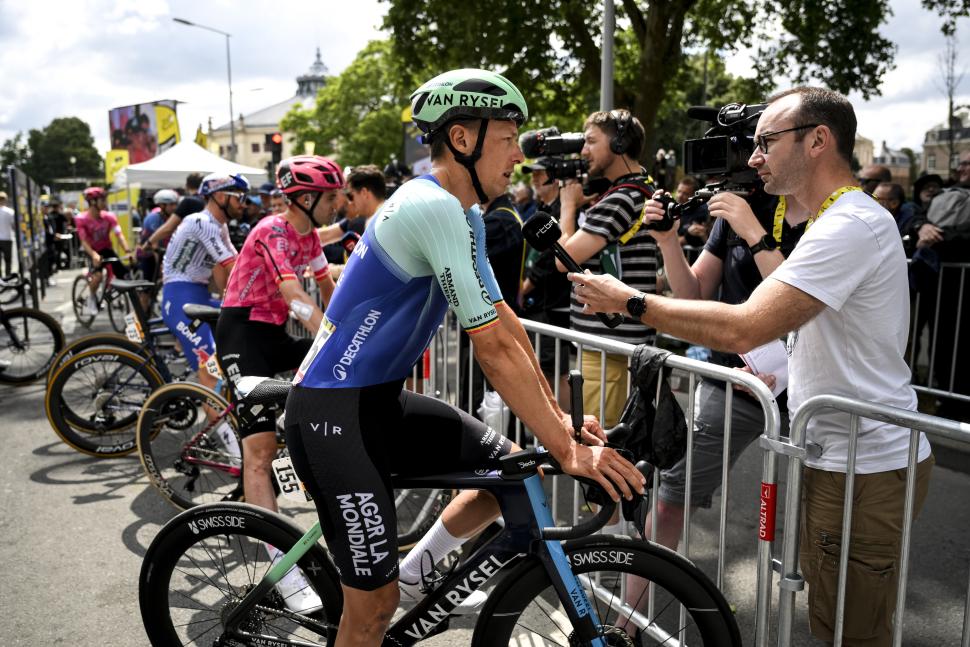 2025 Tour de France Oliver NAESEN (DECATHLON AG2R LA MONDIALE TEAM) a.s.o.-charly lopez (credit: ASO/Charly Lopez)
2025 Tour de France Oliver NAESEN (DECATHLON AG2R LA MONDIALE TEAM) a.s.o.-charly lopez (credit: ASO/Charly Lopez)
Although Decathlon-AG2R riders such as Sam Bennett have been riding the Van Rysel RCR-F since last July, it was only officially launched in March 2025.
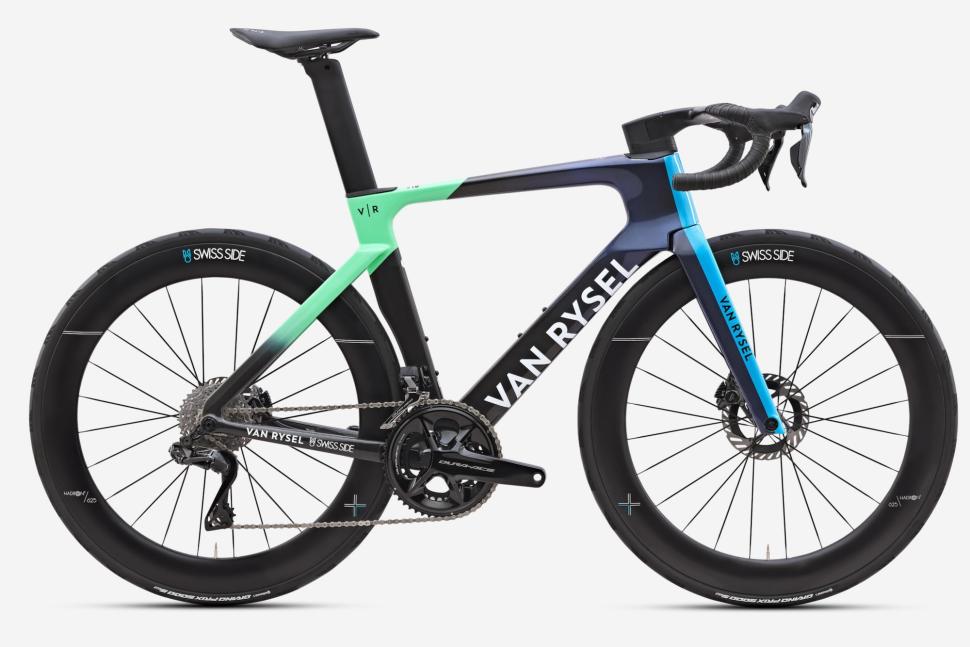 2025 Van Rysel RCR-F Pro Shimano Dura Ace Di2 12V – Team (credit: Van Rysel)
2025 Van Rysel RCR-F Pro Shimano Dura Ace Di2 12V – Team (credit: Van Rysel)
Van Rysel reckons the RCR-F offers an advantage over the RCR-R if the ride has less than 1,500m of elevation gain per 100km (62 miles), and at speeds greater than 35 km/h (21.7mph).
Factor Ostro Vam: faster than the Specialized Tarmac SL8?
All the attention at the 2025 Criterium du Dauphine was on Factor’s unreleased aero road bike that was raced to a stage victory by Israel-Premier Tech’s Jake Stewart.
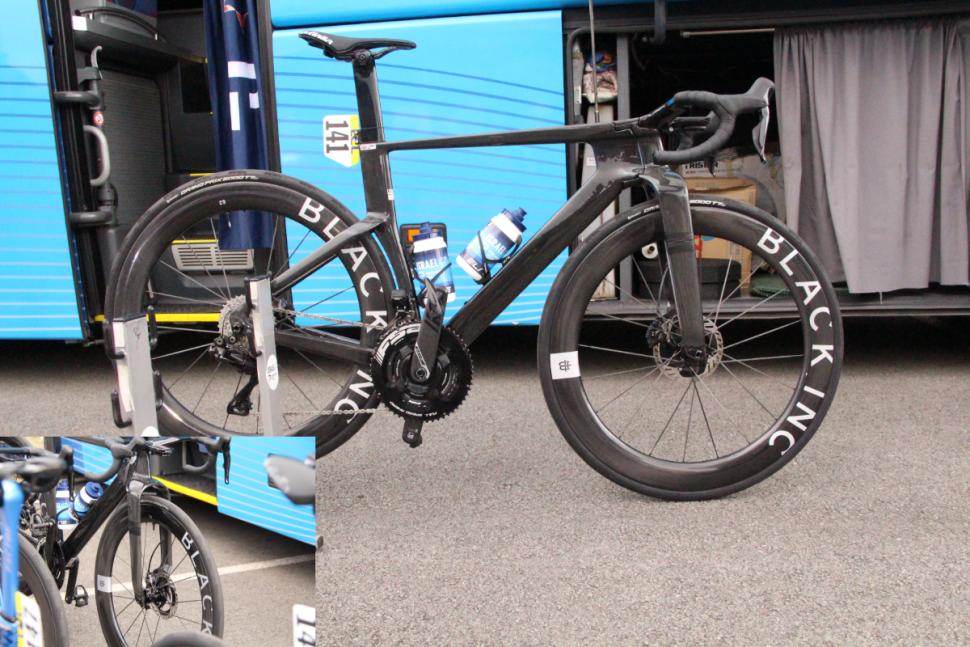 2025 Dauphine new Factor aero bike prototype lead image (credit: road.cc)
2025 Dauphine new Factor aero bike prototype lead image (credit: road.cc)
That bike is being ridden in the Tour de France, but the riders are mostly using the Ostro VAM, which the brand describes as “the benchmark aerodynamic, lightweight race bike.”
According to Factor, it boasts better aero efficiency than the Specialized Tarmac SL8.
Will Factor’s unreleased prototype take over more in time or will it be kept just for sprint stages? It’s impossible to say right now because the brand hasn’t released any details yet. We don’t even have a name, weight, or launch date.
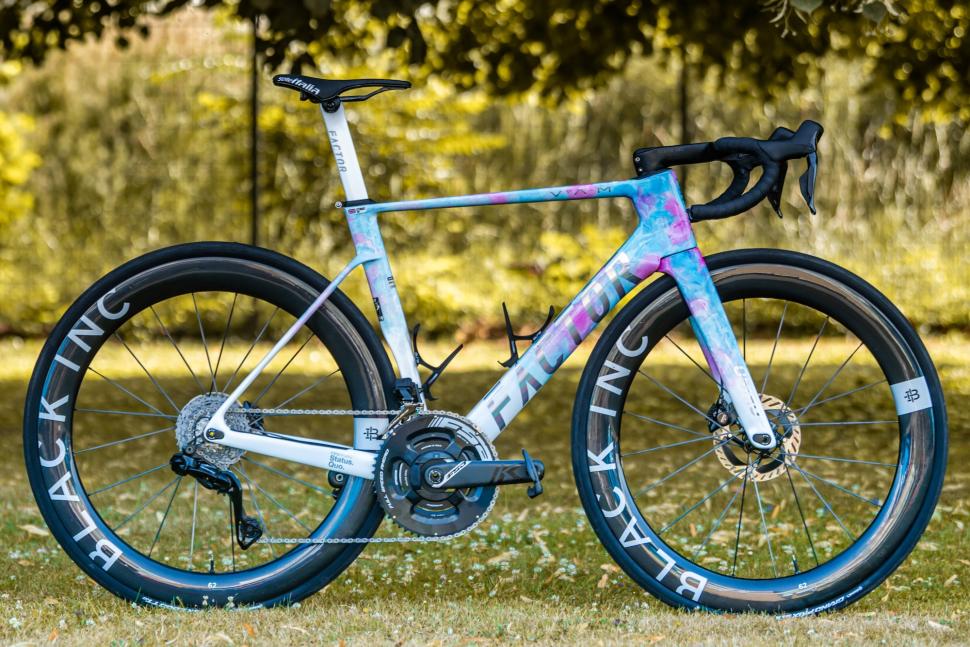 2025 Factor Ostro VAM Watercolour Edition (credit: Factor)
2025 Factor Ostro VAM Watercolour Edition (credit: Factor)
The previous version of the Ostro Vam was said to match the benchmark aero bike on the market at the time (the 2019 Cervelo S5) in terms of aerodynamics while being significantly lighter. So, why did it need redesigning?
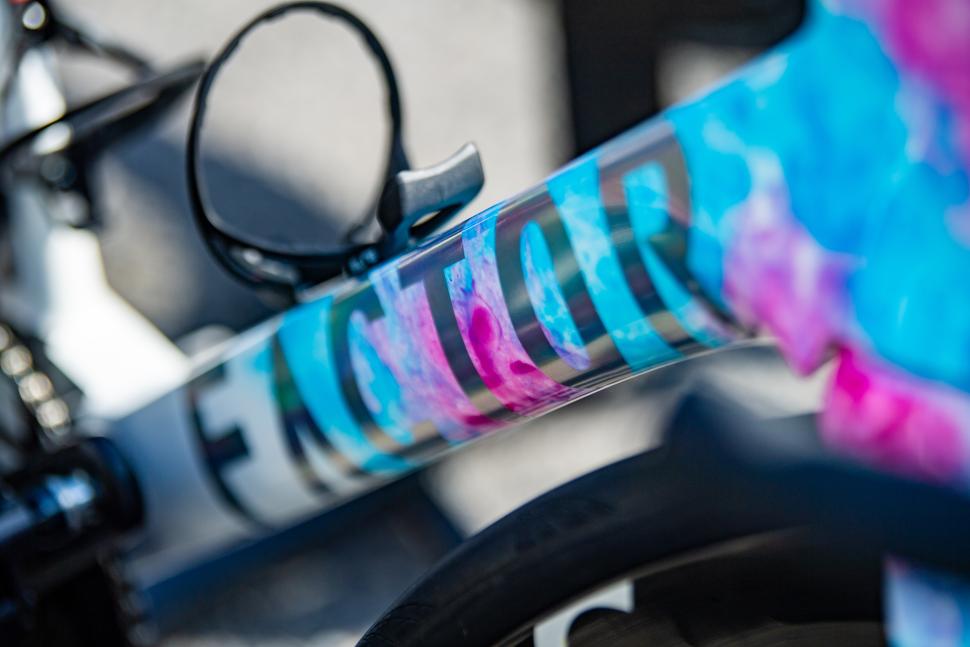 2025 Tour de France Israel-Premier Tech Factor Ostro Vam (credit: IPT Cycling)
2025 Tour de France Israel-Premier Tech Factor Ostro Vam (credit: IPT Cycling)
Factor says it wanted to take advantage of UCI rule changes – notably the removal of the 3:1 rule, which limited component depth to three times its width, and the ability to reduce main frame tube profiles to less than 25mm.
> Why the aero road bike is making a comeback
The new design is said to save 7 watts of power at 48km/h (30mph) over the first Ostro VAM, which was launched in 2020. Additionally, it’s 267.8g lighter when fitted with Black Inc wheels, though most of the weight savings comes from the wheels.
Trek Madone Gen 8… and the death of the Émonda
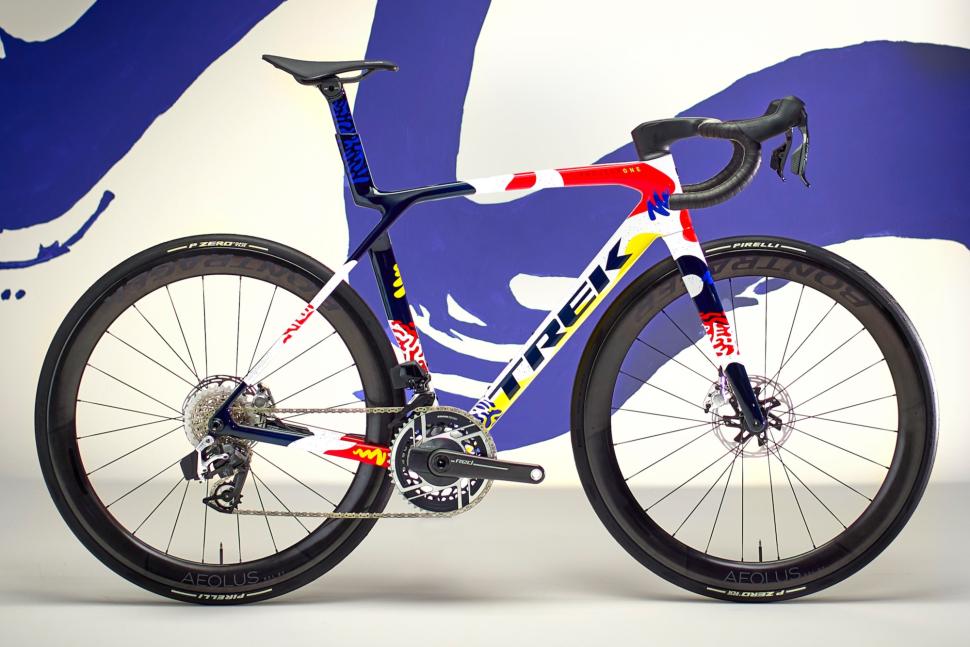 2025 Trek Madone SLR Lidl-Trek Tour de France (credit: Trek)
2025 Trek Madone SLR Lidl-Trek Tour de France (credit: Trek)
Some teams are certainly sticking with the single road bike approach, such as Lidl-Trek with the Trek Madone Gen 8 road bike we first spotted at the 2024 Critérium du Dauphiné.
Trek claims the latest Madone is as aerodynamically efficient as the previous version and as light as the Émonda SLR. By merging these two top-end road bikes, Trek has adopted a one-bike-to-do-it-all approach. So, how come the new Madone has killed off the Émonda, a very successful bike that presumably didn’t sell badly either?
![]() 2025 Tour de France – Lidl-Trek Trek Madone (credit: Trek)
2025 Tour de France – Lidl-Trek Trek Madone (credit: Trek)
“With a new Gen 8 Madone, you really don’t need two race bikes anymore,” says Trek’s director of road bikes Jordan Roessingh. “It provides that snappiness and lightweight ride of the Émonda, but still provides that feeling of speed that you can only get on the Madone, and encapsulates that into one single bike platform.”
“If you’re an Émonda rider, you’re getting a much, much faster bike with the new Madone, but it’s the same weight. You get a bike that’s much, much lighter than the seventh-generation Madone, but with the same aerodynamics.”
Specialized Tarmac SL8: faster than the Venge, stiffer and lighter than the SL7
Of course, the Specialized Tarmac is a thoroughbred racing bike, and nearly four years after it became the brand’s ‘one bike to rule them all’ with the launch of the Tarmac SL7 and the discontinuation of the Venge, the revamped SL8 continues as Specialized’s do-it-all race bike.
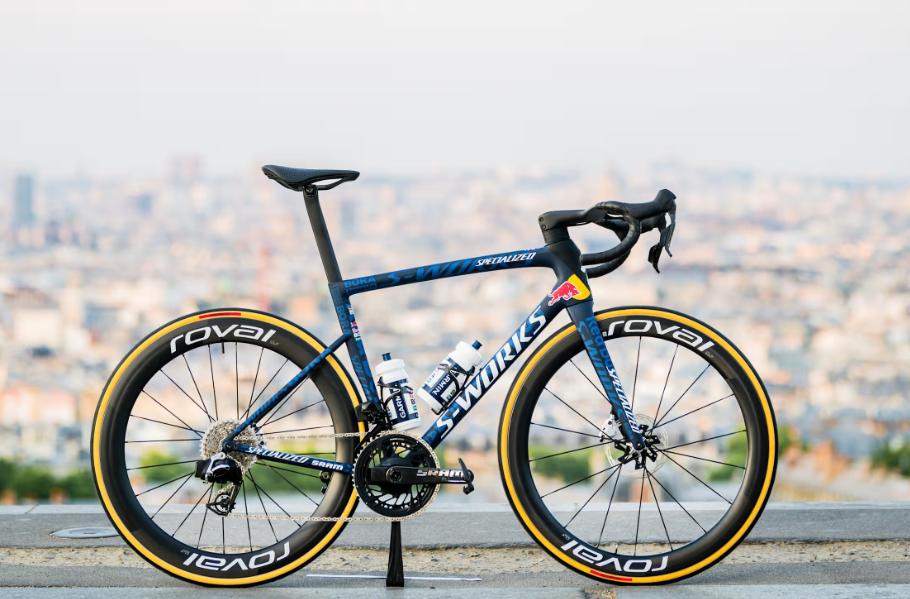 2025 Tour de France Red Bull Bora Hansgrohe Specialized Tarmac SL8 bike (credit: © Red Bull Content Pool / Red Bull – BORA – hansgrohe / James Startt)
2025 Tour de France Red Bull Bora Hansgrohe Specialized Tarmac SL8 bike (credit: © Red Bull Content Pool / Red Bull – BORA – hansgrohe / James Startt)
Two teams in the Tour de France ride the SL8 – Red Bull-Bora-Hansgrohe and Soudal Quick-Step – regardless of whether the stage is flat, mountainous, or somewhere in between.
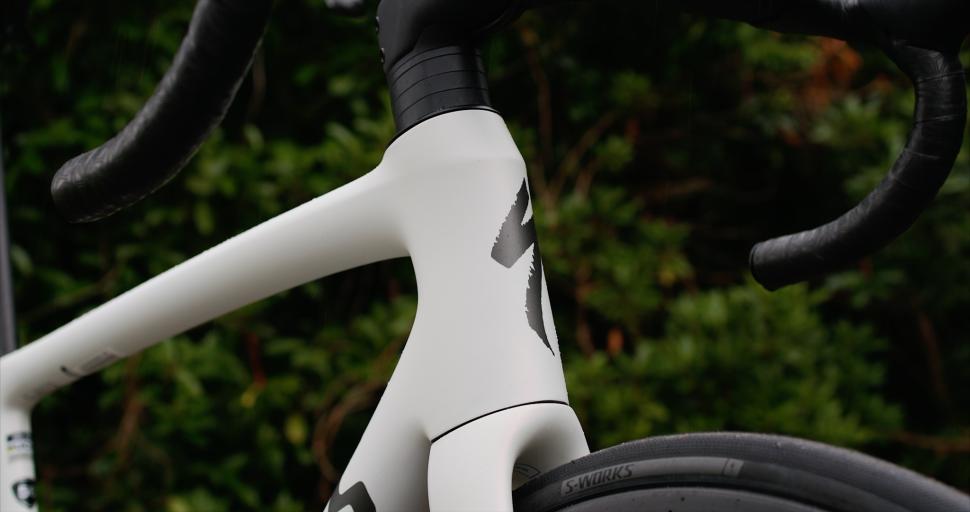 2023 Specialized Tarmac SL8 S-Works headtube (credit: road.cc)
2023 Specialized Tarmac SL8 S-Works headtube (credit: road.cc)
> Specialized Tarmac SL8 vs SL7
Specialized claims the Tarmac SL8 is 15% lighter and 6% more compliant than the SL7, has an improved stiffness-to-weight ratio to the tune of 33%, and is 16.6 seconds faster over 40km (25 miles).
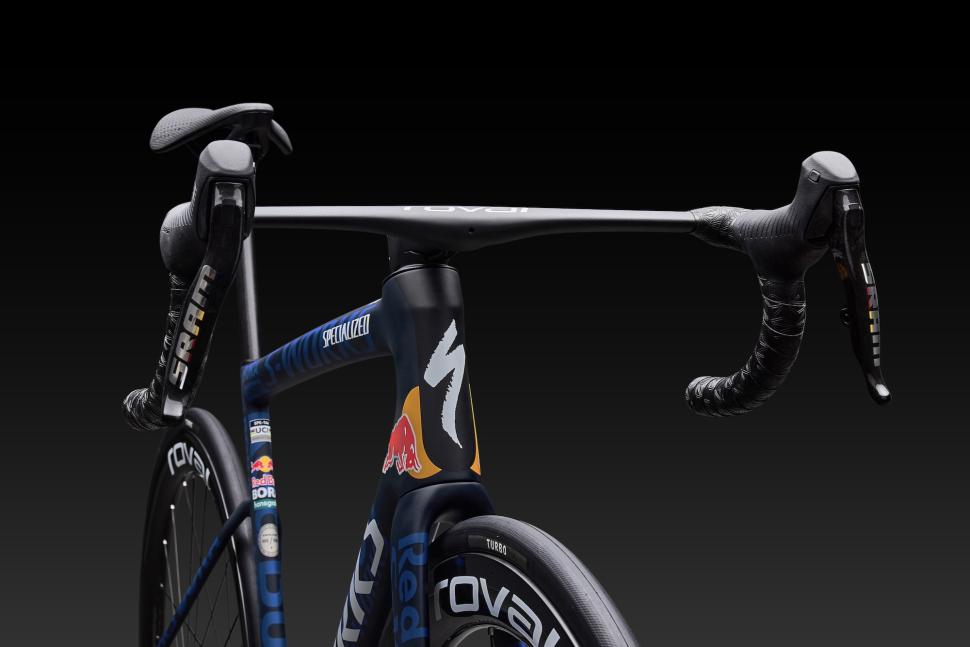 2025 Red Bull Bora Hansgrohe Tour de France Collection (credit: Specialized)
2025 Red Bull Bora Hansgrohe Tour de France Collection (credit: Specialized)
One bugbear that fans of aero might have had with the SL7 was that it didn’t test as fast as the discontinued Specialized Venge at numerous angles in the brand’s own ‘Win Tunnel’. However, according to Specialized, the SL8 is both faster than the 2019 Venge and also the lightest bike in the WorldTour peloton. Those are some pretty big claims.
Pinarello Dogma F: lighter and more aerodynamic, of course
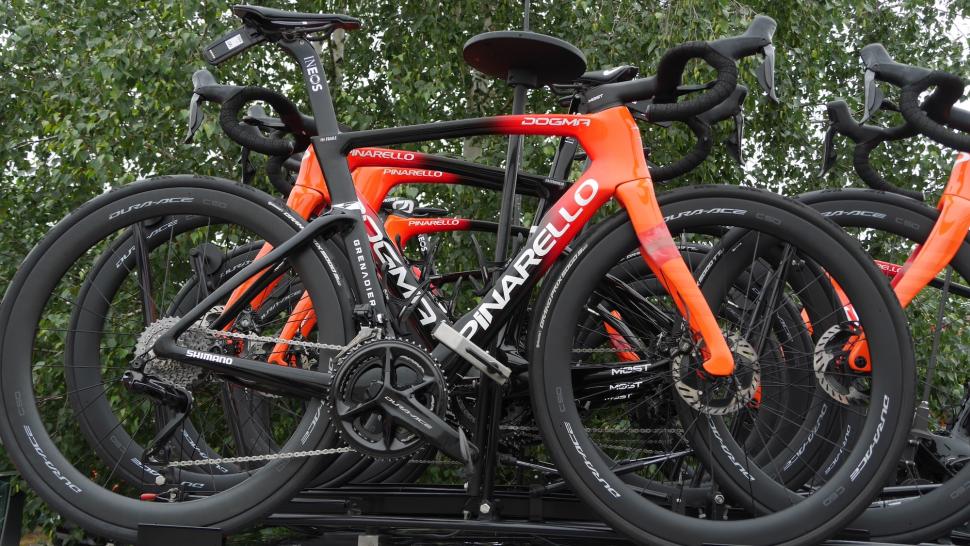 2025 Pinarello Dogma F – 9.jpeg (credit: road.cc)
2025 Pinarello Dogma F – 9.jpeg (credit: road.cc)
Pinarello has always been an advocate for a one-bike approach, and it has previously paid off. Under Team Sky and Ineos, Pinarello bikes have won everything from Grand Tour general classifications to one-day races and Classics. Of course, it helps to have a talented rider on board.
Pinarello launched the latest Dogma F just before the 2024 Tour de France with claims – naturally enough – that it was lighter (by 108g) and more aerodynamically efficient (by 0.2%) than its predecessor. Pretty much every top-end road bike launch focuses on lower weight and/or improved aerodynamics.
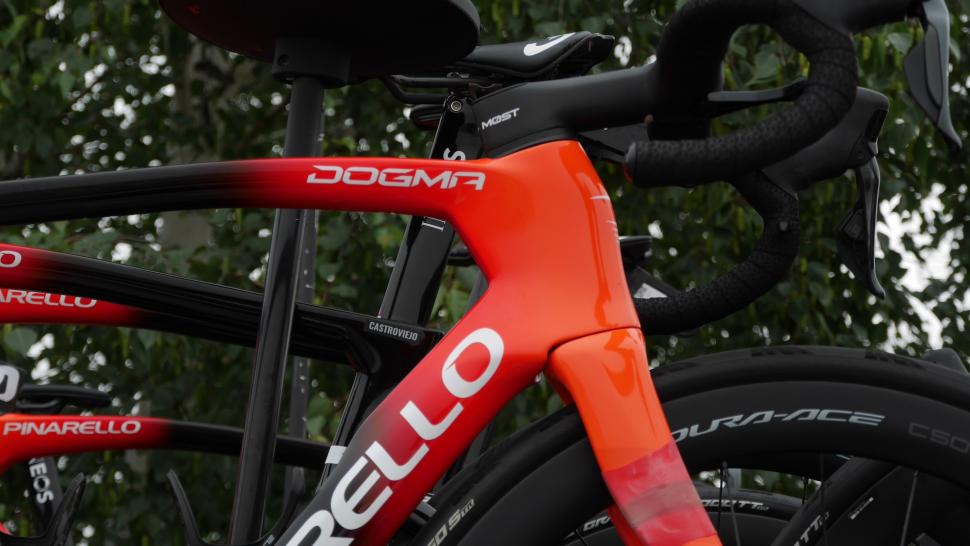 2025 Pinarello Dogma F – 10.jpeg (credit: road.cc)
2025 Pinarello Dogma F – 10.jpeg (credit: road.cc)
“Over the course of a Grand Tour, a 0.2% improvement in the coefficient of aerodynamic drag (CdA) equates to a 175g saving on the bike,” Pinarello says.
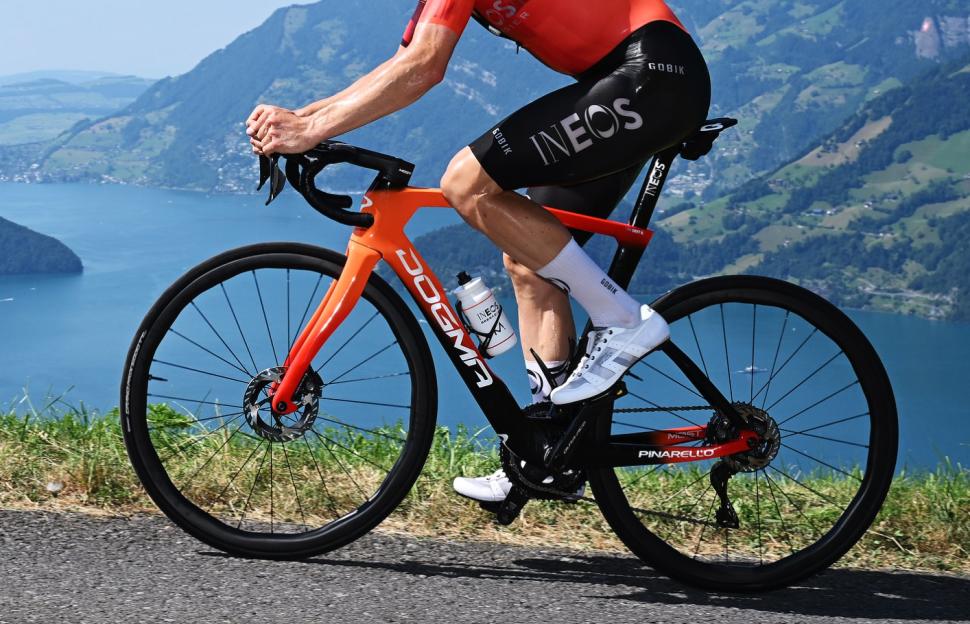 2025 Ineos Grenadiers Pinarello Dogma F (credit: Ineos Grenadiers)
2025 Ineos Grenadiers Pinarello Dogma F (credit: Ineos Grenadiers)
Some familiar features remain on the updated model. The fork and seatstays still wave slightly, the top tube kinks a little, and the seat tube is cut away slightly around the leading edge of the rear wheel. The tabs behind the fork dropouts, designed to reduce turbulence, are still present too. However, the bike now has a deeper head tube, a slimmer down tube, and a completely redesigned section of the frame around the bottom bracket.
Cannondale SuperSix Evo Lab71: the all-rounder for EF Education-EasyPost
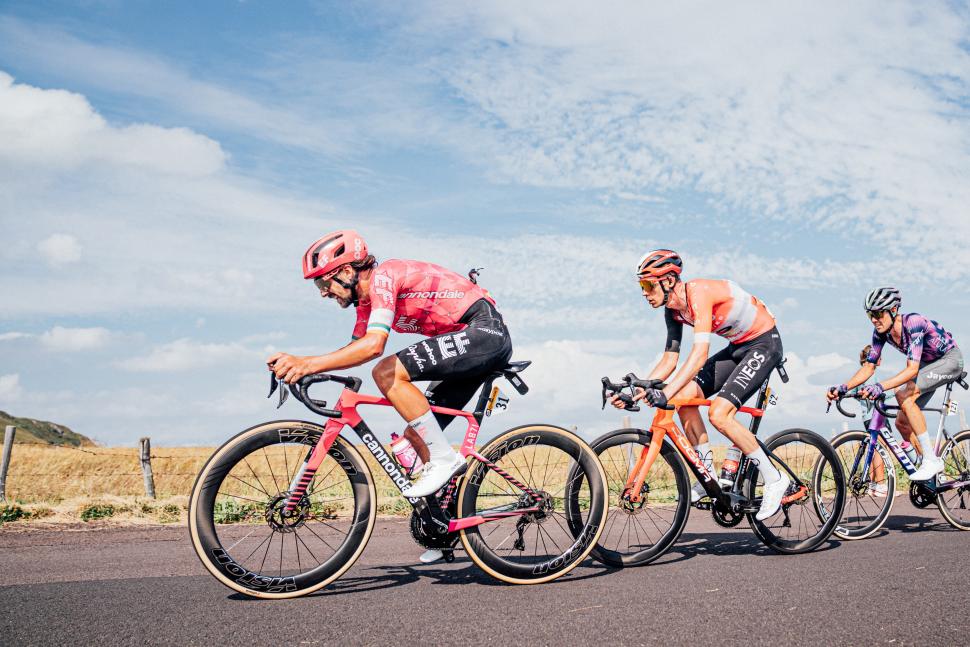 2025 Tour de France Ben Healy, EF Education Easypost © SWpix.com (t-a Photography Hub Ltd) (credit: © SWpix.com (t/a Photography Hub Ltd))
2025 Tour de France Ben Healy, EF Education Easypost © SWpix.com (t-a Photography Hub Ltd) (credit: © SWpix.com (t/a Photography Hub Ltd))
This is an odd one in that although Cannondale offers the SystemSix pure aero road bike, the SuperSix Evo Lab71 serves as EF Education-EasyPost’s one-bike-to-do-it-all.
The SuperSix Evo Lab71 integrates aero features from the SystemSix into the traditionally weight-focused SuperSix Evo, with aerodynamics claimed to be close to those of the SystemSix – and Ben Healy rode one into the race lead on Stage 10 of the 2025 Tour de France.
The frame features an aerodynamically optimised fork, designed without down tube integration for a cleaner aesthetic and a separate crown interface. The head tube houses Cannondale’s Delta Steerer tube, allowing for cable integration.
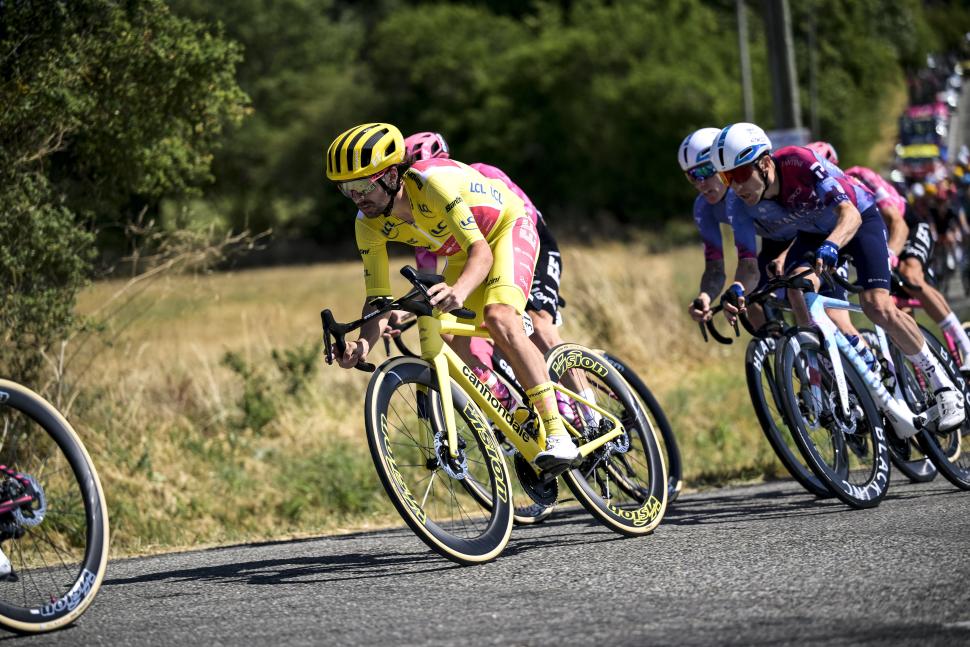 2025 Tour de France Ben Healy Cannondale SuperSix Evo Lab71 yellow. Credit- a.s.o.-charly lopez (credit: ASO/Charly Lopez)
2025 Tour de France Ben Healy Cannondale SuperSix Evo Lab71 yellow. Credit- a.s.o.-charly lopez (credit: ASO/Charly Lopez)
The bike uses a slim seatpost and a seat tube that tapers towards the bottom of the bike. This design is intended to ensure optimal aerodynamics and better compliance.
A fully built Cannondale SuperSix Evo Lab71 tips the scales at the UCI minimum weight limit of 6.8kg and the engineers managed to shed significant weight thanks to a new carbon-fibre layup and some carefully considered component choices. Called Series 0 and only available on the top-tier Lab71 versions, this special fibre and nano-resin composite sheds 40g grams over the Hi-mod version, at 770g for a painted 56cm frameset.
So, has anything changed with the latest crop of race bikes at the Tour de France?
What can we make of all this, then? Well, it’s certainly a mixed picture and you couldn’t say that all teams and bike brands are moving in the same direction. It’s more complicated than that.
Some teams take a two road bike approach, some use a single all-rounder, and some riders have the choice of two different road bikes but, in fact, have spent the whole Tour de France so far on their aero bike. Whether that remains the case in the final stages of the race remains to be seen.
Why do riders with the option of a lightweight bike go for an aero model whatever the terrain?
Well, as races get faster and riders set record times, the need for aerodynamic efficiency grows. These guys are taking the mountains at speeds where aerodynamic advantages are more important than a little extra weight.
Plus, higher modulus (stiffer) carbon fibres are now used, which means that less material can get the same level of stiffness. This means that it’s possible to get a bike with aero tube profiles and features down close to the UCI’s 6.8kg minimum weight limit for racing. Teams can’t go below that weight and there’s very little advantage to be gained by switching to a marginally lighter bike.
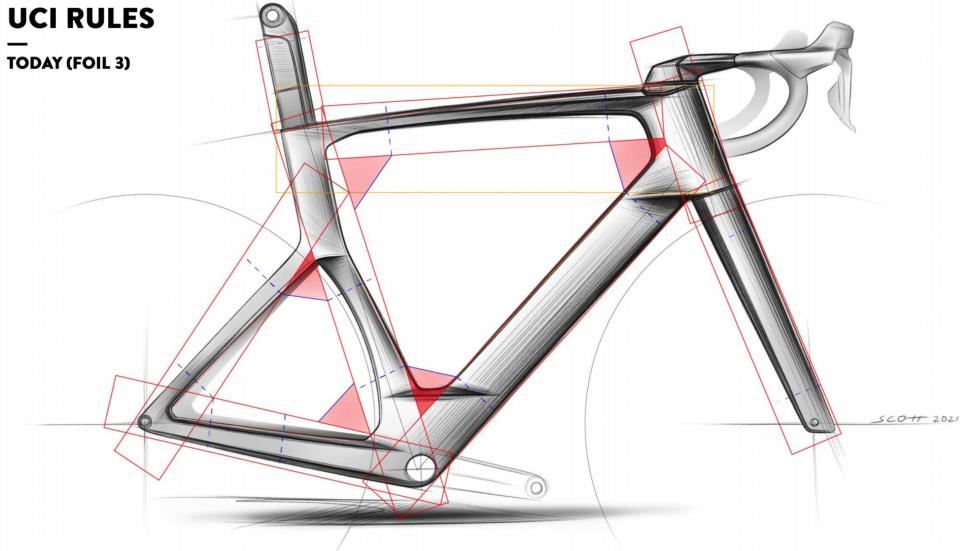 2023 Scott Foil Tech Image uci (credit: road.cc)
2023 Scott Foil Tech Image uci (credit: road.cc)
What happens next?
This depends a lot on the UCI’s minimum bike weight limit remaining at 6.8kg. If it does, why not stay on the most aero option open to you? Your bike might be a little heavier than 6.8kg, but not by much. Not enough to make switching to a lighter but less aero bike an advantage.
We’ll be especially interested to see if there are any changes to the bike choices in the last couple of mountainous stages of the 2025 Tour de France.
Do you prefer a ‘do it all’ bike or would you rather have a specific tool for a specific purpose? Let us know in the comments below.

